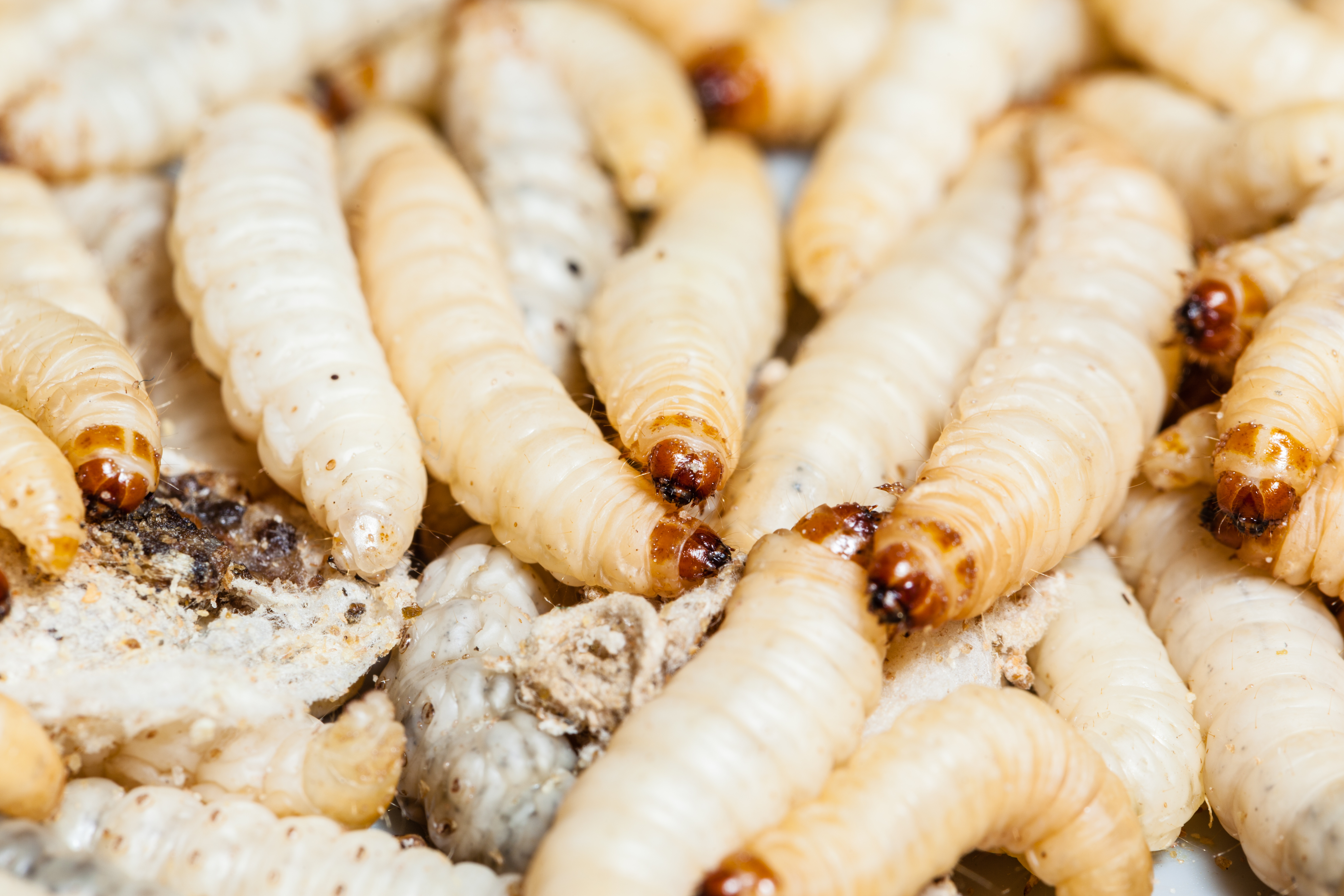



Eating fly larvae can stimulate natural behaviour in broilers
Broilers fed live fly larvae are able to exhibit more natural behaviours and develop healthier legs, leading to improved welfare.Research from Wageningen University and Research has demonstrated that if broiler chickens have to forage and peck at live fly larvae, they can move more and improve their welfare overall.
During the research, the broilers were offered live black soldier fly larvae in different quantities and at different times during the day. "We really saw that the broilers were motivated all day long to get to the larvae", says researcher Allyson Ipema. "The broilers showed a lot of natural foraging behaviour: they kept scratching and pecking at the larvae".

Healthier legs
Fast-growing broilers do not move enough, which can cause problems with their legs. By offering live larvae in the litter several times a day, the broilers become more active and walk more. This benefits the leg health of the broilers, and also improves animal welfare.
The larvae are not only tasty, they are also full of fat and protein, which makes them a good addition to the diet. The research shows that the broilers fed the most larvae also spent the longest time on their natural foraging behaviour. Ipema: "There is a maximum to this though. If we supplement the diet for more than 10 percent with insects, the broilers will probably grow less fast".
Circular food source
Offering live larvae not only has a positive effect on the welfare of broilers. "An additional advantage is that the larvae from this research can easily be grown on manure and waste products", says associate professor Liesbeth Bolhuis. "This also makes them a potentially sustainable and circular food source".
The researchers found even greater positive effects on behaviour when the broilers were presented with the larvae in transparent tubes with holes. This was shown in a second study. "Because the chicks have to make an effort to get the larvae out of the tubes", says Bolhuis, "They spend a large part of the day on it".









